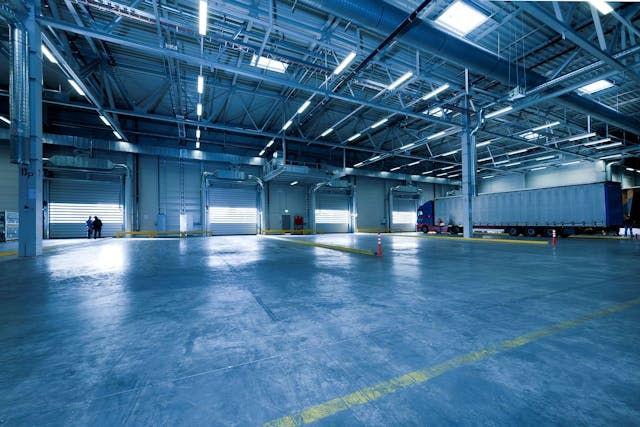CRE Trends Driving the Demand for Smaller, More Flexible Workspaces 🏢✨
- EPS Team

- 3 days ago
- 4 min read
The commercial real estate (CRE) sector has undergone a seismic shift over the last few years, with traditional office spaces giving way to smaller, more flexible work environments. Once dominated by sprawling headquarters and multi-floor corporate offices, today’s landscape reflects new priorities shaped by hybrid work, technology, employee well-being, and cost efficiency. 📊💼
In 2025 and beyond, demand for flexible office formats—such as co-working, shared offices, and right-sized corporate hubs—is expected to remain strong. For CRE investors, developers, and property management leaders, this trend is not just a temporary adjustment but a long-term shift in how office space is planned, designed, and utilized.

Why Flexible Workspaces Are Surging 📈
Several factors are converging to drive the demand for smaller, adaptable office formats:
Hybrid work models – A survey by CBRE found that 60% of companies are adopting hybrid work structures, leading to reduced space needs. 🏡+🏢
Cost efficiency – With U.S. office vacancy reaching 19.6% in Q1 2024 (Moody’s Analytics), many firms are downsizing to cut overhead.
Employee preference – According to Gallup, 52% of employees prefer a mix of remote and in-office work, requiring offices to become more collaborative, less fixed.
Sustainability – Smaller, energy-efficient workspaces align with ESG targets and reduce carbon footprints. 🌱
These changes are reshaping CRE investment strategies, where flexibility, location, and tenant experience matter more than square footage.
The Evolution of Office Design 🪑🔄
Office design has moved beyond cubicles and corner offices. Today’s layouts emphasize adaptability:
Hoteling and desk-sharing models – Companies allocate fewer desks per employee, often at a 0.7 desk-to-worker ratio, reducing overall space demand.
Collaboration zones – Shared lounges, breakout rooms, and brainstorming spaces replace large conference rooms.
Technology integration – Smart booking systems, digital access controls, and hybrid meeting tech are essential for smaller offices. 💻📲
Well-being features – Even with smaller footprints, wellness is a priority: ergonomic furniture, biophilic design, and access to natural light improve productivity. 🌿☀️
This new design ethos ensures workspaces remain relevant and attractive for tenants in competitive CRE markets.
Key CRE Trends Supporting Flexible Workspaces 📊
1. Rise of Co-Working and Shared Spaces 🤝
The global co-working market is projected to reach $24 billion by 2030 (Grand View Research). Operators like WeWork, Industrious, and IWG continue to expand, while landlords experiment with their own flexible offerings.
2. Flight to Quality ✨
Even as companies downsize, they demand premium features: Class A buildings with modern amenities, strong connectivity, and sustainability certifications. Tenants are more willing to pay for less space in a better building.
3. Suburban Office Demand 🚗
Remote and hybrid work have shifted preferences closer to where employees live. Markets like Raleigh, Phoenix, and Austin are seeing higher demand for smaller suburban hubs versus central business districts.
4. Short-Term Leasing 📄
Flexible leases are becoming standard. According to JLL, 41% of office tenants now seek lease terms under 3 years, giving them agility in uncertain markets.
5. Technology-Driven Efficiency 📲
CRE platforms and AI-powered systems help landlords optimize space use, predict tenant behavior, and increase efficiency. For smaller offices, this is a key differentiator.
Market Impacts: Winners and Losers 🏆⚖️
Winners:
Landlords offering flexible layouts and short-term lease options.
Secondary and suburban markets with affordable, modern spaces.
Buildings with ESG certifications and wellness-focused amenities.
Losers:
Outdated Class B/C office buildings with limited adaptability.
Large corporate campuses in urban centers that no longer match tenant needs.
According to Cushman & Wakefield, over 1 billion square feet of U.S. office space may face functional obsolescence by 2030 unless adapted.
Investor and Developer Takeaways 💡
For CRE investors and developers, the trend toward smaller, flexible spaces demands proactive strategies:
Redesign existing properties – Convert large floors into multi-tenant spaces or co-working hubs.
Focus on location + lifestyle – Properties near transit, dining, and housing remain more competitive.
Offer turnkey solutions – Pre-furnished offices with plug-and-play features attract downsizing firms.
Integrate technology – Smart building systems, energy tracking, and hybrid meeting tech are non-negotiable.
Future-proof leases – Build flexibility into agreements, allowing tenants to scale up or down as needs shift.
The Role of Leadership in Managing Change 👩💼👨💼
Successfully navigating this CRE shift requires strong leadership at both investment and property management levels:
Asset managers need to balance reduced square footage with higher service expectations.
Property managers must adapt operations to serve multiple smaller tenants instead of a few large ones.
Leasing teams should market flexibility and lifestyle rather than just square footage.
This evolution underscores the importance of hiring experienced executives who understand both tenant needs and operational efficiency.
Looking Ahead: 2025 and Beyond 🚀
The demand for smaller, more flexible workspaces is not a passing trend—it’s the new normal. As hybrid work solidifies and economic pressures persist, CRE strategies will increasingly favor adaptive, tech-driven office formats.
Industry experts predict that by 2030, 30% of office inventory will be made up of flexible leases and co-working models. For landlords, developers, and investors, embracing this shift means staying competitive in a rapidly changing environment.
Conclusion 🏁
The future of office CRE is smaller, smarter, and more flexible. Companies no longer seek expansive footprints but dynamic spaces that reflect hybrid work, employee well-being, and sustainability goals.
For landlords and operators, this transformation is both a challenge and an opportunity. Success will depend on innovative design, agile leasing, and strong leadership.
At the end of the day, people drive performance. Partnering with a specialized commercial real estate executive search firm like Executive Property Staffing ensures that the right leaders are in place to guide portfolios, optimize property management, and adapt to evolving tenant demands. 🏢🌟




Comments